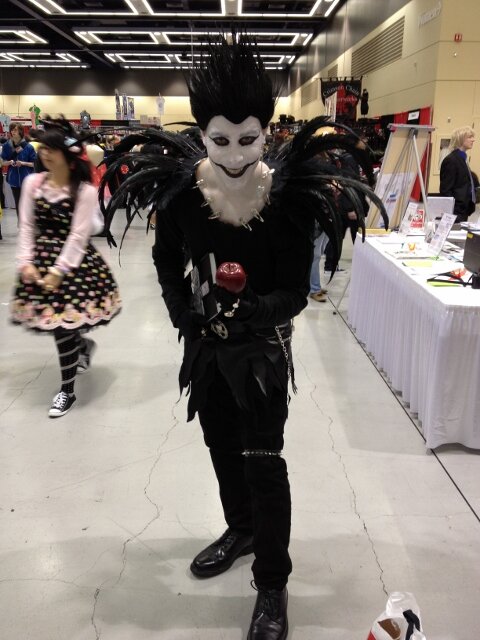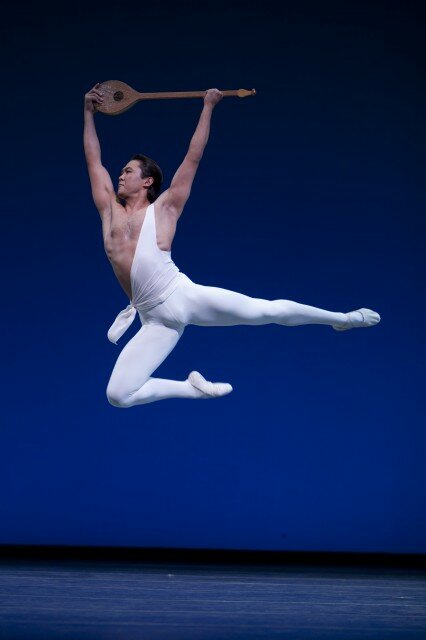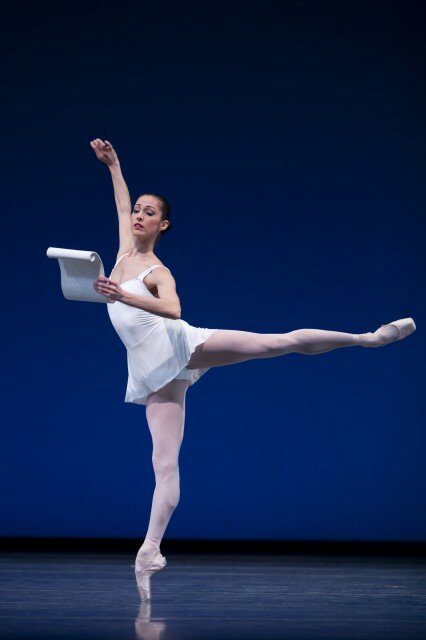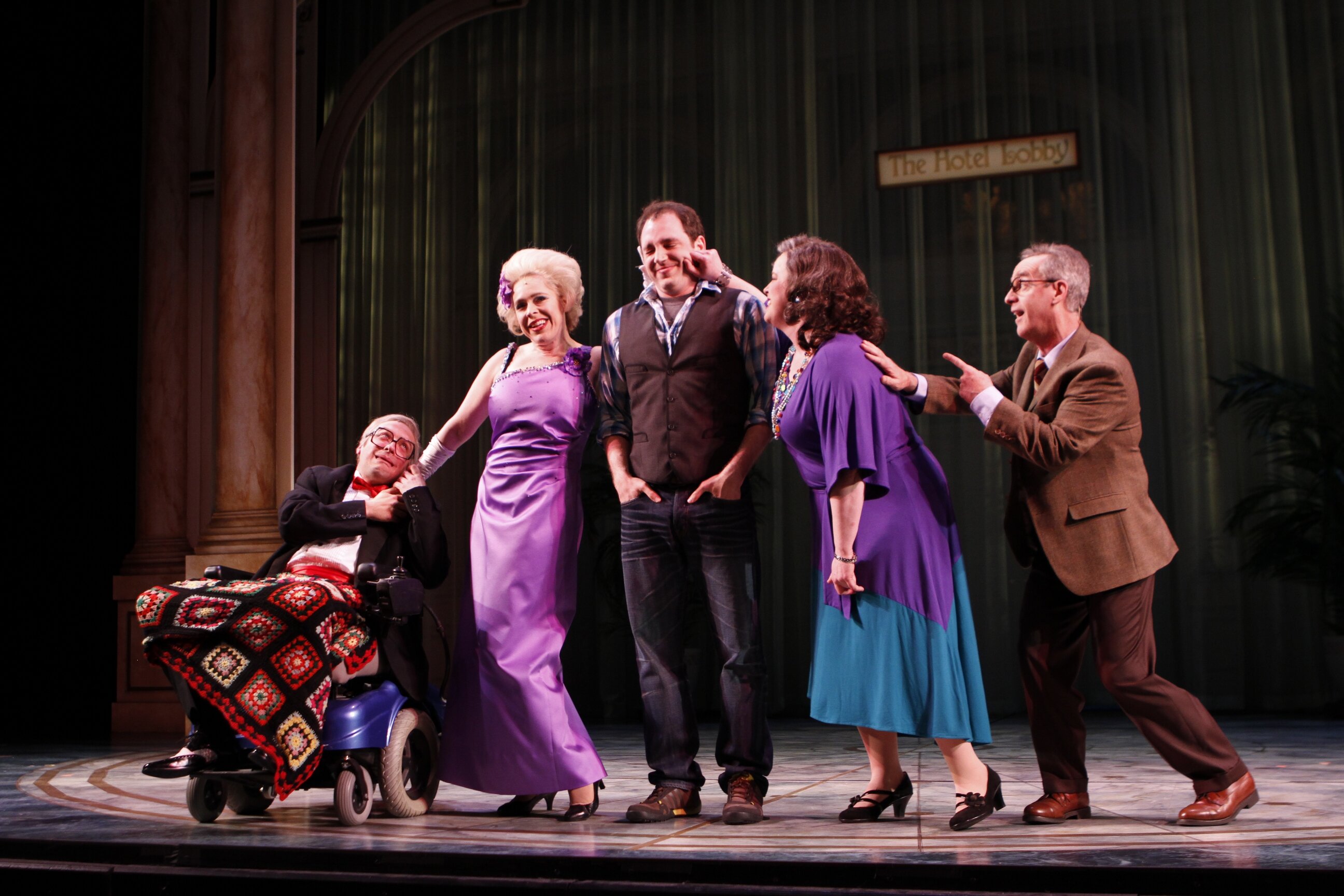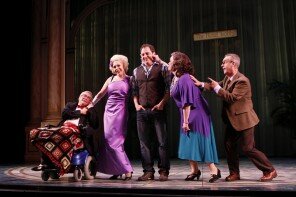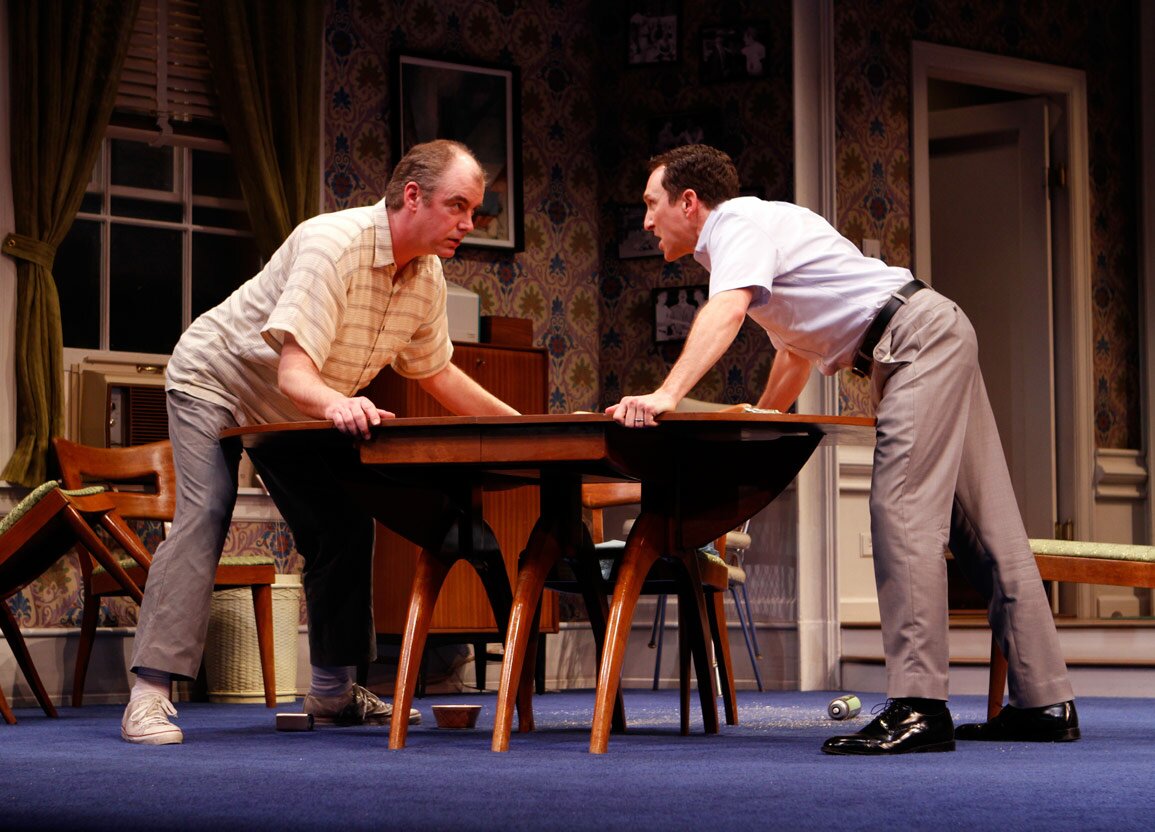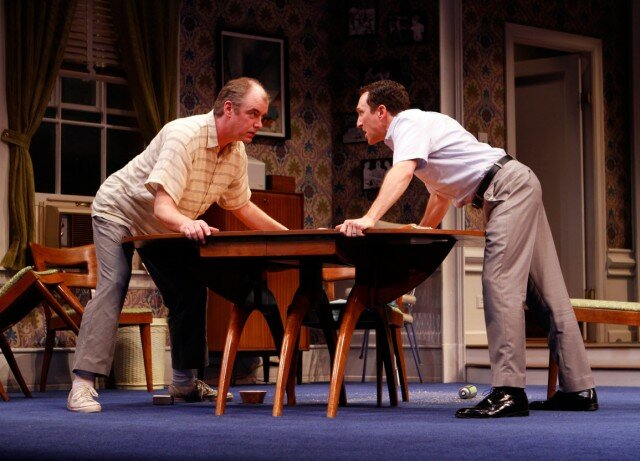While anarchists were proving they had nothing better to do on a Tuesday in May, the 5th Avenue Theatre production of Damn Yankees (through May 20; tickets) took us back to sweeter, simpler time when a guy could sell his soul to the devil and still have a chance to get it back (Hint: keep your receipt).
Anchored by strong dancing and the conviction to play it sincerely, this production is just the antidote you need to any anarchists spray painting Porsche Cayennes outside.
The Adler and Ross musical comedy, set in the ’50s, is essentially an update of the Faust legend. Middle-aged real estate agent Joe Boyd loves his Washington Senators baseball team so much, he doesn’t have to think too hard when the devil, in the personage of “Mr. Applegate” offers to turn him into the “long ball hitter” in his 20s that the Senators need to win the pennant from the all-powerful Yankees.
Abandoning his wife, he trots off to “come out of nowhere” to get a spot on the Senators’ roster. In a weak moment, Mr. Applegate gives Joe an escape clause on his “baseball stud for soul” contract, and it ends right when the Senators need Joe to close the pennant.
Dancing is the star here, led by the excellent corps of male dancers who make up the members of the Washington Senators. Their acrobatic dancing, flipping, and tapping gives the whole show a sincere, nostalgic, irony-free sweetness that works. As Gloria, the reporter who is out to prove that Joe isn’t what he seems, Nancy Anderson holds her own and she cartwheels across the stage like a gymnast in “Shoeless Joe from Hannibal, MO.”
As the new Joe, Christopher Charles Wood has a beautiful, warm voice that fits the era of the story. He is most compelling as an actor in the scenes in which he visits (as the young baseball god) his wife Meg, played by the always wonderful Patti Cohenour. Their scenes and songs (“A Man Doesn’t Know” and “Near to You”) are really touching, as Joe admits to missing his old life (despite his awesome new one) and Meg to missing the husband who left without explanation.
This musical is owned by the bad guys, though. As Mr. Applegate, local favorite Hans Altwies is all confident swagger and delicious evilness. His Applegate lures Joe away from his middle-class, middle-aged life effortlessly. It’s easy to see how a less-confident actor might be tempted to amp up the evil here, but Altwies is an actor who knows that sometimes less is more.
And sometimes more is more. As Lola, the vamp brought up by Applegate from the home office to seduce Joe away from his nostalgia for his old life, and past his escape-clause expiration date, Chryssie Whitehead is magnetic. She’s an accomplished dancer and a decent singer, but she also has that charismatic spark that calls her out as a star. When she’s on stage, you have a hard time taking your eyes off of her. You have no problem believing that what Lola wants, Lola gets.

